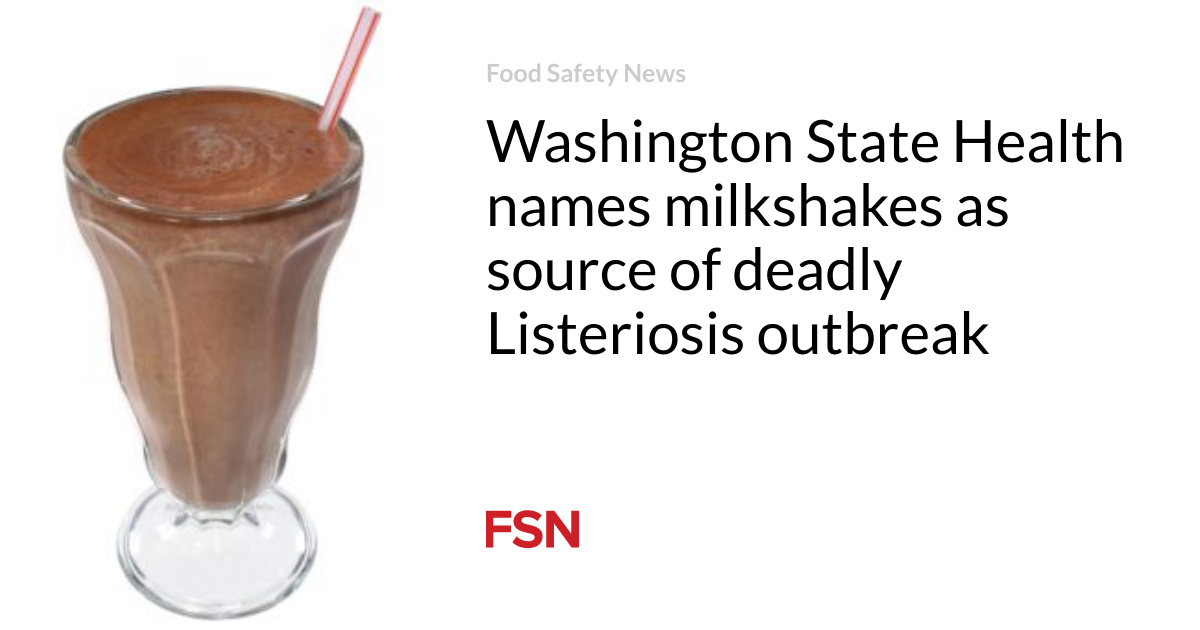Infection
Washington State Health names milkshakes as source of deadly Listeriosis outbreak
The mortality rate hit 50 percent, with three deaths out of six Listeriosis illnesses in a recent Washington State outbreak blamed on milkshakes.
The Washington State Health Department reports that between February 27 and July 22, 2023, six Washington State residents (five from Pierce County and one from Thurston County) developed severe illness due to Listeria bacteria (listeriosis) infection.
All six people had conditions that made their immune systems less able to fight disease. Three of the individuals died. Genetic fingerprinting (whole genome sequencing) of the bacteria indicated that the same food was likely responsible for making all six people sick.
The restaurant discontinued the use of its two milkshake machines on August 8. The milkshake machines will be kept out of service until the Tacoma-Pierce County Health Department determines they are free of Listeria contamination and no longer pose a danger to the public.
About Listeria infections
Food contaminated with Listeria monocytogenes may not look or smell spoiled but can still cause severe and sometimes life-threatening infections. Anyone who has eaten any recalled product and developed symptoms of Listeria infection should seek medical treatment and tell their doctors about possible Listeria exposure.
Because milkshakes and ice cream have caused listeria outbreaks, the Tacoma-Pierce County Health Department collected milkshake samples from the restaurant on August 8, 2023. On August 18, 2023, all flavors of the milkshakes were found to be contaminated with the same strain of Listeria that caused the outbreak.
Two people infected with listeriosis reported consuming milkshakes from Frugals restaurant at 10727 Pacific Ave: S., Tacoma, WA, 98444, before becoming sick.
Also, anyone who has eaten recalled products should monitor themselves for symptoms during the coming weeks because it can take up to 70 days after exposure to Listeria for symptoms of listeriosis to develop.
Symptoms of Listeria infection can include vomiting, nausea, persistent fever, muscle aches, severe headache, and neck stiffness. Specific laboratory tests are required to diagnose Listeria infections, which can mimic other illnesses.
The state Department of Health is working with Pierce and Thurston County local health jurisdictions to gather information from interviews with patients and their families to help identify any common exposures.
Listeria bacteria are found in the environment and can spread from contaminated food to surfaces. Listeria can grow on foods kept in the refrigerator for several days. The bacteria are easily killed by heating food to a high temperature (165°F).
Although healthy, non-pregnant individuals may suffer only short-term symptoms such as fever, muscle aches, nausea, abdominal pain and diarrhea, Listeria monocytogenes is especially harmful to some people:
- For pregnant womenListeria infection can cause pregnancy loss, premature birth, or life-threatening infection in the newborn.
- Listeria infection often results in hospitalization and sometimes death for people with a weakened immune system (those (who have health problems or take medicines that lower the body’s ability to fight germs and sickness).
- For people 65 years or older, Listeria infection often results in hospitalization and sometimes death.
Pregnant women, the elderly, young children, and cancer patients with weakened immune systems are particularly at risk of serious illnesses, life-threatening infections, and other complications. Although infected pregnant women may experience only mild, flu-like symptoms, their infections can lead to premature delivery, infection of the newborn, or even stillbirth.
People who are not pregnant usually have a fever, muscle aches, and tiredness. They may also get a headache, stiff neck, confusion, loss of balance, or seizures.
Symptoms usually start within two weeks after eating food contaminated with Listeria monocytogenes but may begin as early as the same day or as late as ten weeks after exposure.
Pregnant people usually have a fever, muscle aches, and tiredness.
(To sign up for a free subscription to Food Safety News, click here.)

